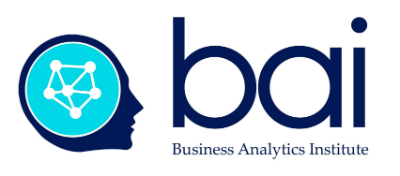What is the key to demonstrating managerial brilliance?
To begin with, have your team’s strategy written by an outside consultant. Ask your marketing team to transform the document into a thirty-slide presentation with lots of animated graphics to wow your audience. Present the slides to your team, insist on vague acronyms that no one will understand and cite figures that no one will verify. After you talk, send your stakeholders a self-congratulatory e-mail on such a great presentation, but don’t attach the strategy document in question.
If you agree with any of the above points, reading this post will be a waste of your time.
Business analytics takes a very different approach to management. In this view management is about taking decisions. Use the data to improve your decision-making process, both in your personal decisions and for those of your customers, colleagues, and stakeholders. Communicate the data along with visual and verbal clues about the nature of the business and the logic of the industry. Business analytics isn’t limited to crunching the numbers, but helping your stakeholders work through the data. The end game of analytics in business isn’t to make yourself shine, but to help others transform data into impactful action.
Steven Sinofsky’s blog post on continuous productivity is one of the most insightful I have read in recent years.[i] In this post, the former head of Microsoft’s Windows division makes a fundamental distinction between organizational, personal, and continuous productivity. He argues that data’s role in traditional views of the organization is to measure costs and benefits of core processes: productivity is always cheaper and faster. He suggests that data’s role in business has a different meaning when talking about personal productivity: data is used to promote perceptions of individual success in the boardroom or through the Web. He proposes that data’s role in continuous productivity today is quite different from either of these views: the value of data is directly tied to its use in solving customer challenges.
Understanding how individuals and organizations use data to explore and to deal with challenges is a fundamental difference between business analytics and statistics. People don’t see data as data, but as partial reflections of reality. This “reality” is conditioned not only by education and experience, but by personal views of work, organization, and markets. The principles of Gestalt are quite helpful here in understanding how individuals translate data into meaningful patterns and shapes.[ii] We prefer the simplest interpretation of the data before us (“Pranantz”), we prefer closure to ambiguity, we tend to make associations by proximity. Presenting data, acronyms and visuals isn’t enough, we need to help our audience understand how it reflects solutions to the challenges they actually care about.
Developing verbal and visual stories that give meaning to the numbers is a key in transforming data into impactful actions. Analytics isn’t scrubbing the data clean, but exploring how the context helps us better understand the problems, the bottlenecks, and the opportunities of our business. One of the key teachings of the Bauhaus Movement is quite pertinent here: the form in which we present the data is intimately tied to the function of its perceived value.[iii] Business analytics is about crafting data-driven stories that lead to impactful decisions - decisions that solve customer problems rather than our own.
Telling visual stories by the numbers is at the heart and soul of the Business Analytics Institute. In our Summer School in Bayonne, as well as in our Master Classes in Europe, we put analytics to work for you and for your organization. The Institute focuses on five applications of of data science for managers: working in the digital age, data-driven decision making, machine learning, community management, and visual communications. Data-driven decision making can make difference in your future work and career.
******
[i] Sinofsky, S., (2013). 'Continuous Productivity' and the Next Generation of Work and Tools For Work, https://www.linkedin.com/pulse/20130831145328-2293107-essay-continuous-productivity-and-the-next-generation-of-work-and-tools-for-work
[ii] Busche, L., (2015). Simplicity, Symmetry, and More…, Gestalt, https://designschool.canva.com/blog/gestalt-theory/
[iii] Lekach, M., (2016). Know Your Design History: The Bauhaus Movement, 99Desighttps://en.99designs.fr/blog/creative-inspiration/know-your-design-history-the-bauhaus-movement/


